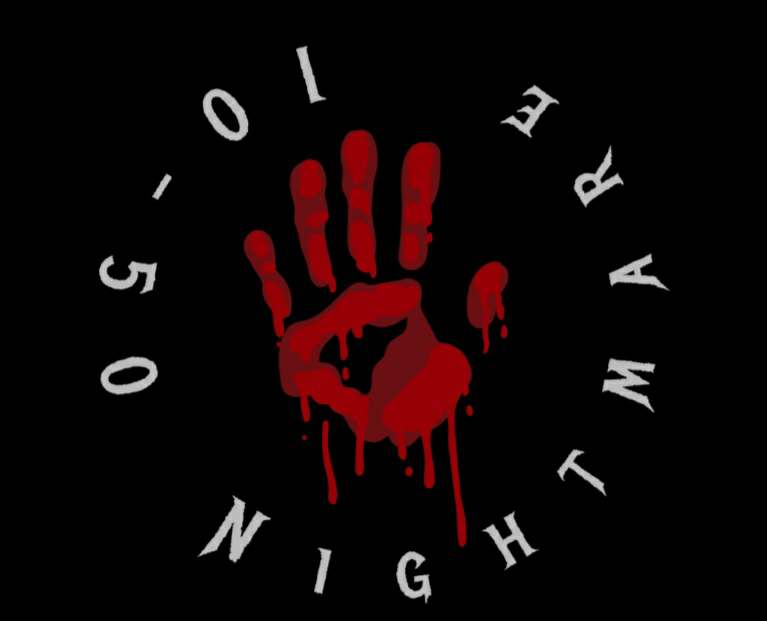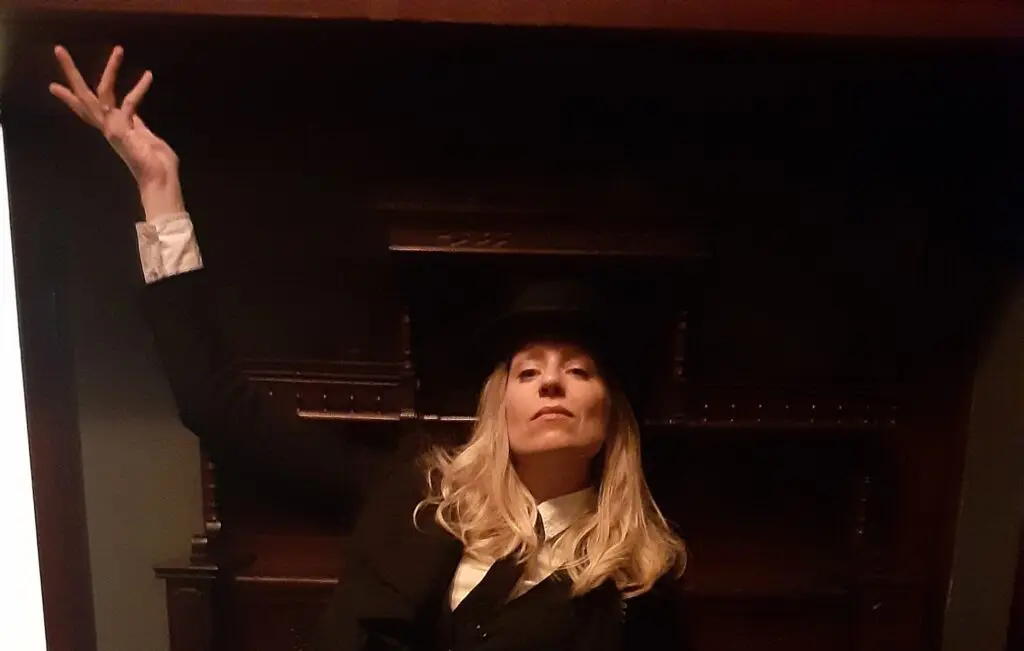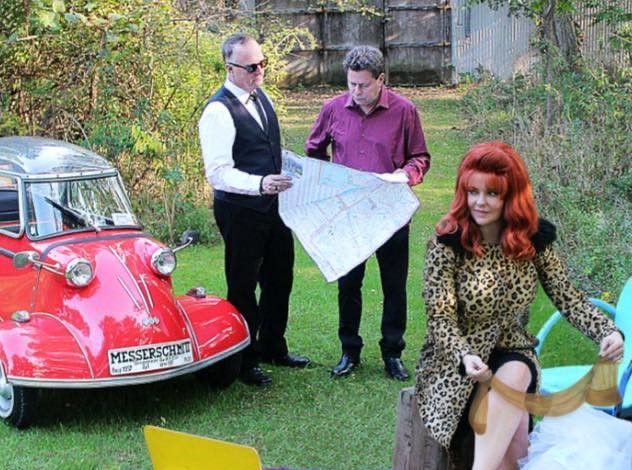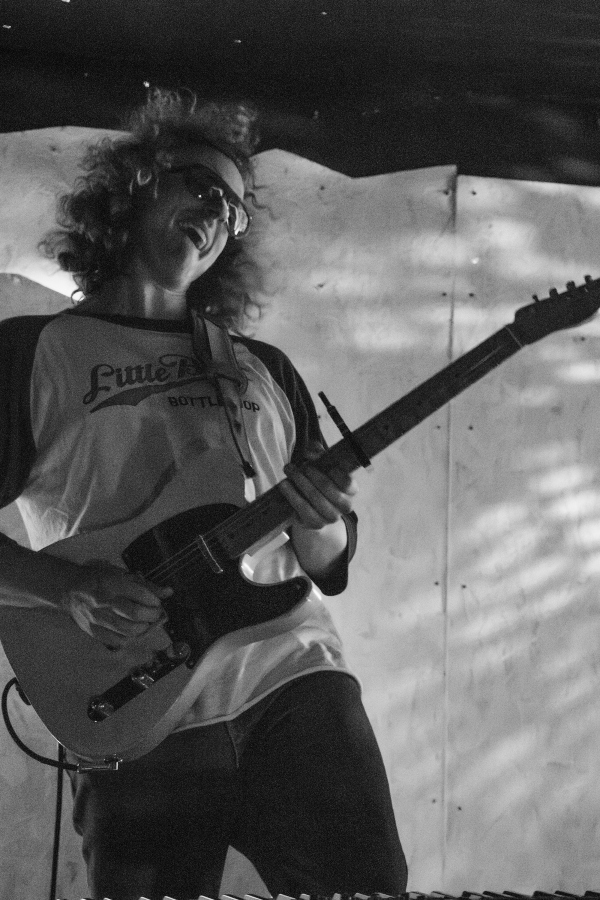Hudson Scramblin’ – Dallas Trombley and the Quest to Reach Manhattan
Written by Staff on August 22, 2023
Necessity is the mother of invention. And stubbornness is the father, though he denies it and refuses to take a paternity tell. Well, his loss is our gain, and nowhere is nessity, and stubbornness more embodied in our region that Dallas Trombley. In his push for an achievement to cap off his college senior year, he followed a winding, wet path that would see him schooled every day for a decade.
I reached out to Dallas, and without further ado…
RRX: I am fascinated by what you do, but I want you to start out with the fact that you build boats, correct?
DT: Yeah, I mean, if you want to call them “boats.”
RRX: What would you call them?
DT: For fifteen to twenty years, I haven’t been able to figure out what to call them. When I started out, they were definitely rafts. We were twenty-one years old, going into college and we wanted to do something before we all figured we would work in cubicles for the rest of our lives, and so we decided to build a raft and float from Coeymans, which is just above Greene County, to Manhattan, like right after college. So that was literally just getting some wood off the ground behind my grandfather’s house, we found some rotting fence posts someone was getting rid of, and we got some barrels donated to us from the Ravena-Coeymans Yacht Club. They had mold in them, it turned out, and [the raft] was really a piece of shit, fifteen by fifteen, boards that were on top of barrels, which took us nine miles downstream, and we had to call the police to be rescued, etc. So basically, the two friends that I went with were like, ‘well that was stupid and embarrassing.’ But along the way, all these people kept telling me ‘this is stupid, you can’t do it, you’re going to die,’ you know? I mean, we weren’t going to die; it just wasn’t going to work. So it kind of annoyed me, so when my friend wouldn’t do it, I kept doing it.
Later in the summer, I got a section of a dock, and tried to build something like a pedal powered bicycle powering up a paddle wheel to have the propulsion. And figured out that the wind blows up the Hudson River, predominantly, in the summer. So, although we’re going down this tide, six inches in the water, and having feet above the water, we weren’t going anywhere, so we had to abandon ship after like ten days. So it’s that sort of thing, summer after summer, but getting better each year because the first time we started, we thought we can’t sink, second time we learned we had to have some kind of propulsion.
The third year, we got two docks donated to us from the boathouse down in New Baltimore. We took one of them apart, it had foam instead of barrels and we cut them into shapes that would cut through the water better, we could row it, and we started doing a website, which was really innovative, this would have been 2007. Made it seem like we were really cool or whatever. Then we decided to set up at Alive at Five. So we started to get some press and stuff out of it. By leaving from Alive at Five, a lot of people saw it. And then we went to shore to resupply just south of the Port of Albany, and some people stole it and set it on fire. You just can’t predict something like that. The police had to come because it drifted into a bunch of yachts. The police found it and said that we had to just burn the thing, there was no way to get it out of the water. That was 2007.
Then we started to get smarter, I did research on electricity and sticks and glue, construction methods. We would take plywood and cut it into different shapes, almost like you’re gonna make a boat out of maybe construction paper or manila folders, and you use wire to hold it together and fiberglass to cover the seams. We were getting smarter there, studying a bunch of electricity. A controlling motor, powered by maybe solar panels. We go through this whole thing to find out that if you make a homemade boat, it takes about eight weeks to get registered in New York, which would’ve put us into October. Then we went with an unregistered boat, got tickets, couldn’t use the motor, things fell apart rather quickly. But we went like 72 miles.
The next year, we built a sixteen-foot wide by twenty-four feet long, two story tall boat, biodiesel powered paddle wheel, we learned about how to convert engines to do that. Learn how to run electricity so we can have like a live bridge up top. We went across the river and came back, a test run about a mile, like smoke’s coming out of the top, stuff like that. The engine fell off. We couldn’t take that down to New York City. And then we finally made it down to New York – we took a canoe, turned it upside down, wrapped it in Saranwrap, and then put fiberglass all over the top of it. And then we lifted the fiberglass shell off the canoe which didn’t stick because it stuck to the Saranwrap. So then we had a canoe shape. We did it four times, so we had four canoe shapes which we made into pontoons. And then we got all this specialty equipment, like rowing and stuff, and then we finally made it in 2010. It was like eleven days. So that was the end of that trip. I wrote a book about it, about coming to age on the Hudson in my twenties.
After the first book, I said to myself, ‘I always wanted to do the Mississippi River. Why don’t I do that in my 30s?’ And then I could write another book about the things you learn in your thirties.’ So I tried to go down in 2018 to Pittsburgh, to go to New Orleans, like two-thousand miles. We could use the odds and ends of all the other boats that fell apart. So we called it “Float with the Phoenix.” We built it here, and shipped it out to Pittsburgh, and we suffered from a lot of floods and our engine died, finally got as far as I could in Ohio, three-hundred-and-sixty-five miles of two thousand. Basically I had to call home and have my mom put money into a bank account so that I could get an Enterprise Rent-a-Car.
RRX: his was such a journey for you, year after year after year. In your case, you’re inventing this stuff, learning how this stuff works. Very trial and error. Now there is a boating community on the Hudson, along the Mohawk with the canal. Was there, at first, an adversarial relationship? Or were they supportive? And over time, did that relationship grow in either way?
DT: Yeah, definitely. Going to the Coeymans Yacht club for the first time, and people did not want you there. I’m twenty-one, I don’t know what I’m doing, and I’m asking for a favor, and people were like “get out of here,” so it’s like, they had given us some barrels with holes in them. But then other times, I get to the third boat, the one that got stolen, and we would get ticketed by the police, people would be calling us. Now, as a thirty-nine-year-old, looking back, I get it; this could’ve been a navigation hazard, its look was an eyesore, etc. People were cutting our lines to set us adrift. I don’t know if that was necessarily the boating community.
But after the third one got stolen, it was on WGY, and people sort of felt bad and were like, “well, fuck everybody for doing that. Kid’s trying to do something. And our boats became more professional looking. We started to get registered, and we were a little bit older. I feel like maybe two years later, a man named John Vargo, the editor for Boating on the Hudson magazine, which is distributed all up and down the Hudson, and something about the story touched him, so he reached out to me, and would write about it. He would call to make sure we were safe. It became known what we were doing, and some people were out on the river in the summer, and they would see you year after year, would take an interest in what we were doing.
RRX: On the Hudson, aside from the successes and failures and intricacies of boating, did you have any great moments, great things you saw, like a really cool hawk or something?
DT: Do you want the rated-R version?
RRX: Absolutely.
DT: I call this “the fuck in the muck.” We’re paddling from the top of the boat, and each of us had an oar, and we’re going past an island; there’s a group of islands on the Hudson between Athens and Hudson, the city. And we’re talking, and as we go past I hear my friend Rob go, “Hey Dallas, Dallas, look at the shore.” And I look over, and there is an overweight woman on her back, and an overweight man on top of her, in six inches of water, completely naked, and he just rails this woman, like you know, with every thrust her knees go out and up in the air and we’re like, “row faster, row faster, let’s get out of here.” And ten feet down is this kid in a Gilligan hat holding a boat, and I have no idea what’s going on, so we got the hell out of there.





 RadioRadioX
RadioRadioX